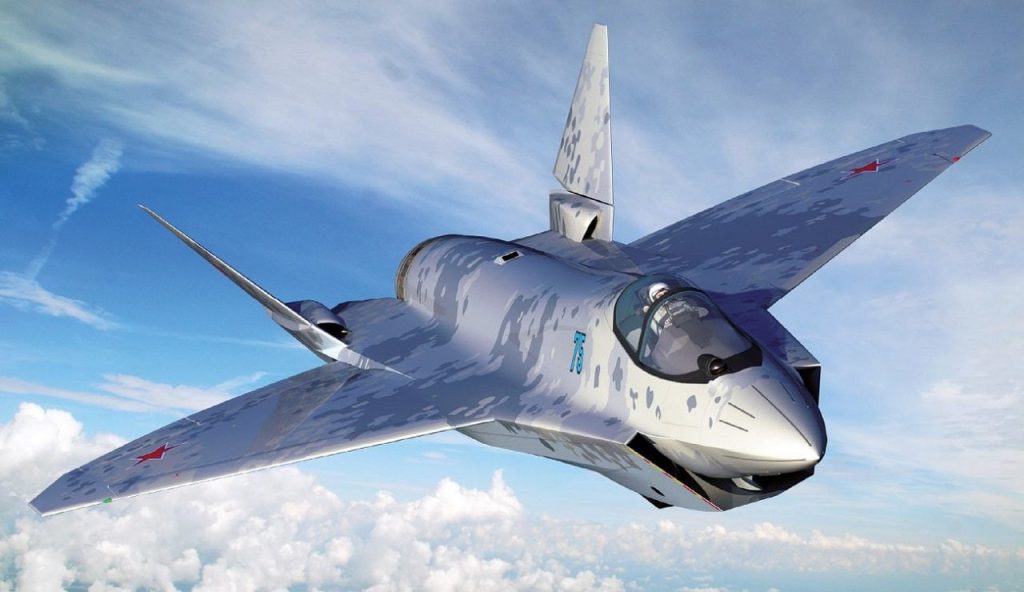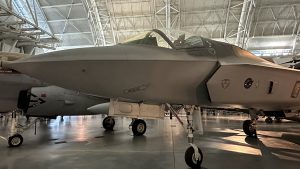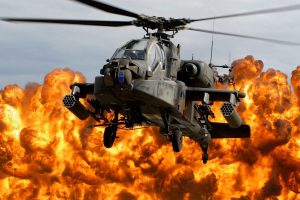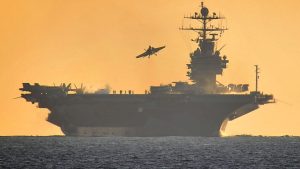| If countries can afford the F-35, it is unlikely they would go for a Su-75. That means the F-35 will likely be a sales smash for years. |

Russia has been obsessed with chess for generations, but does this interest transfer over to warplanes?
Russia’s new Su-75 fighter plane is nicknamed “Checkmate,” building on the board game’s appeal. Russia hopes to export what it claims to be a fifth-generation warplane to subsidize further acquisition by its air force. The Su-75 Checkmate is thought to be built on the Su-57 airframe and be an improvement over competing fourth-generation fighters on the export market. Should the F-35 program be worried about the Su-75?
To find out, I will compare and contrast the procurement status of both fighters.
The Su-75 is not ready for serial production and will not even fly until 2024 at the earliest. Manufacturing in numbers is not expected until at least 2025. The Su-75 is not a priority at this time for Russia as Moscow is focused on the ground war in Ukraine in which newly produced missiles are more of a priority over building future fighters.
But Su-75 prototypes are on the way and mockups have been displayed at air shows. Russia hopes this initial production will be quicker because the Su-75 has parts and components used by its stealth Su-57 program. Some of the research and development will not be needed because of technological advances in the Su-57.
Su-75’s manufacturer, United Aircraft Corporation, and its subsidiary Sukhoi Aircraft Company believe their stealth fighter will be cheaper than the F-35 ($30 million compared to around $80 million for the F-35). Like the F-35, the Checkmate will also be a single-engine airplane that will help reduce maintenance costs and increase fuel efficiency. The Su-75’s Saturn AL-41 engine puts out 24,000 pounds of thrust without the afterburner and 39,000 pounds with an afterburner.
The Checkmate will also have internal weapons bays that can carry a host of air-to-air missiles, air-to-ground missiles, and bombs. A 30mm cannon will be included for dogfighting. This would be a weapons payload of seven tons. The Checkmate’s targeting system can track six bogeys at once. Stealthiness is attained with its V-shaped tail, hybrid wing design, and engine intakes.
UAC and Sukhoi want the Su-75 to reach speeds of MACH 1.8 with a range of 1,864 miles and a ceiling of 40,000 feet.
It is difficult to foresee a scenario in which the Su-75 would sell more than the F-35 on the export market. Numerous U. S. allies are either flying or ordering the F-35. There are eight partner countries. Non-partner countries such as Switzerland, Finland, Germany, and the Czech Republic have chosen the F-35.
UAC and Sukhoi want to sell the Su-75 to developing nations such as Vietnam, India, and countries in Africa. These air forces would love to have a stealth fighter, but can they afford the $30 million price tag to buy in enough numbers to keep the Su-75 from becoming vaporware? Russia wants one country to “jump into the pool first.”
The aircraft needs a primary sponsor, as Rob Lee, a senior fellow at the Foreign Policy Research Institute said to NBC News. Lee believes the Su-75 program could languish without a substantial foreign partner. The Su-75 program needs to announce a major buyer soon. This will be difficult because of sanctions and export controls in place due to the war in Ukraine.
The Su-75 will not sell in Europe as the F-35 owns the continent due to Russia’s invasion of Ukraine. The F-35 is stealthy and robust in its sensor fusion, engine power, and weapons payload. Plus, the Americans usually offer training to pilots along with spare parts and maintenance support. The extra cost is worth it for so many partner air forces that are replacing fourth-generation fighters with the F-35.
What if the Su-75 does not even have stealth attributes? This would severely cramp foreign sales if the manufacturer cannot make the Checkmate fully stealthy. The Su-75 could then not be marketed as a fifth-generation fighter. Customers are not worried about the F-35’s level of stealthiness. If countries can afford a major F-35 buy, it is unlikely they would go for the Su-75.
Thus, Lockheed Martin will continue to have an international hit on its hands and the United States can use the F-35 as part of its diplomacy efforts by reminding allies that they are getting one of the best, if not the best, fighter in the world.





